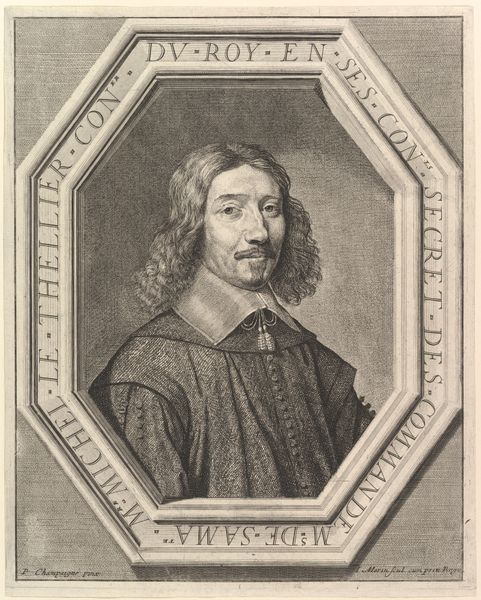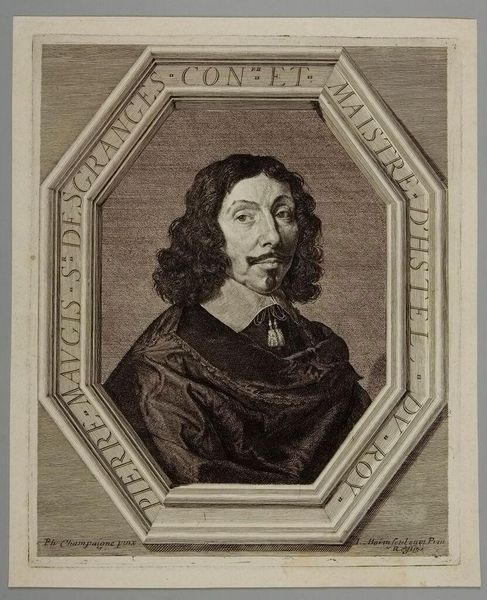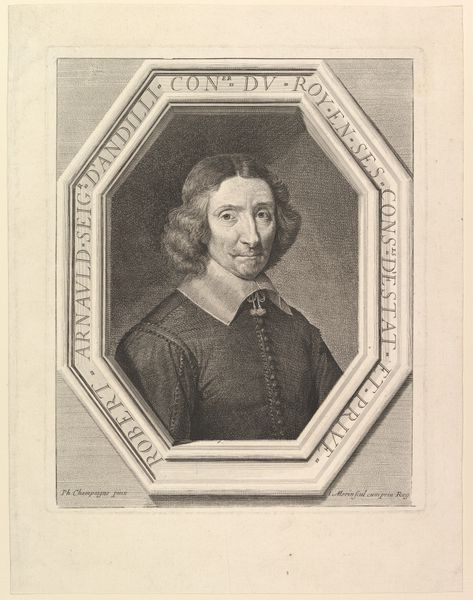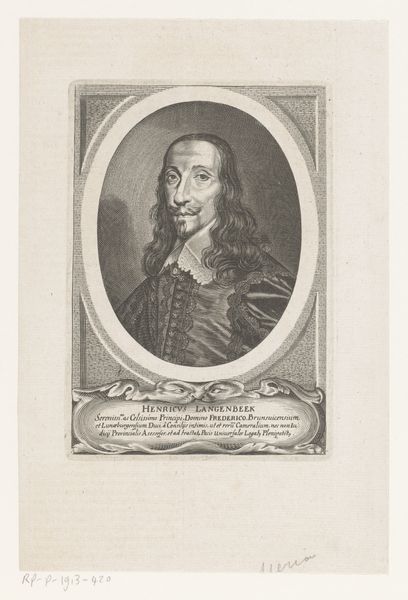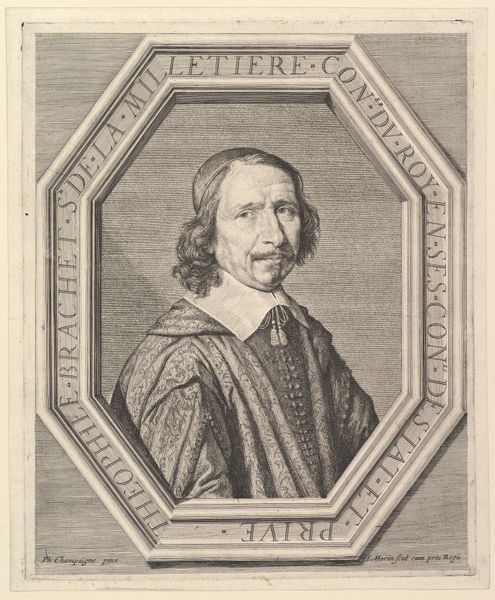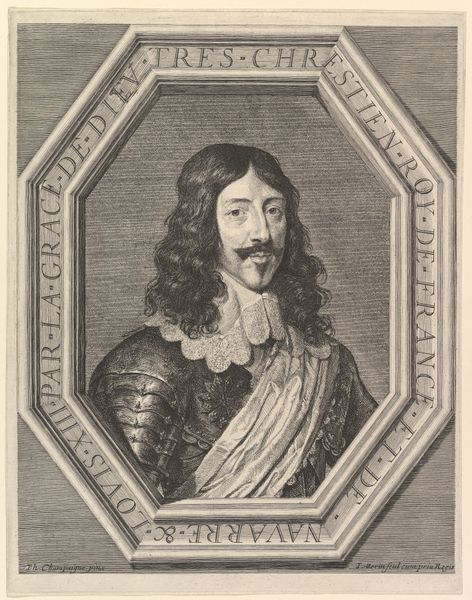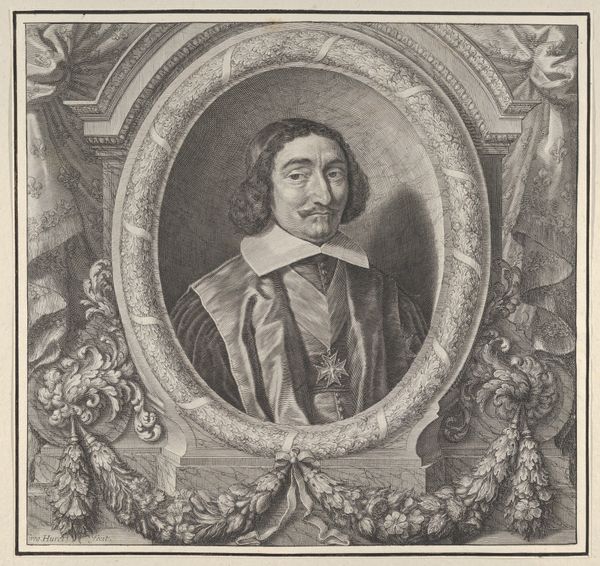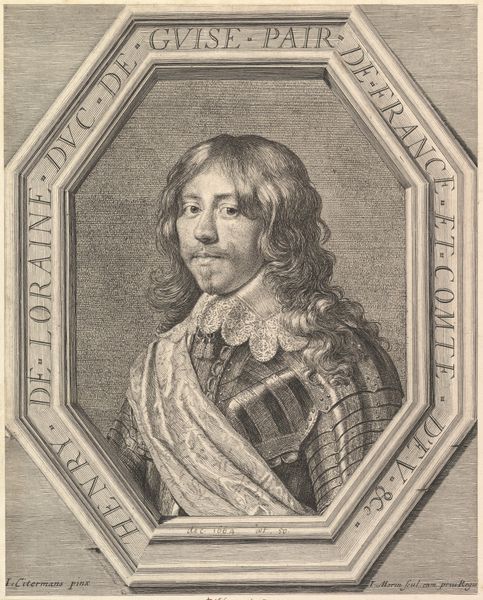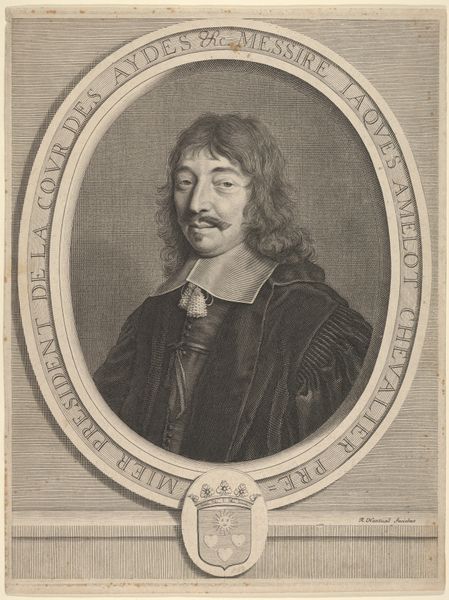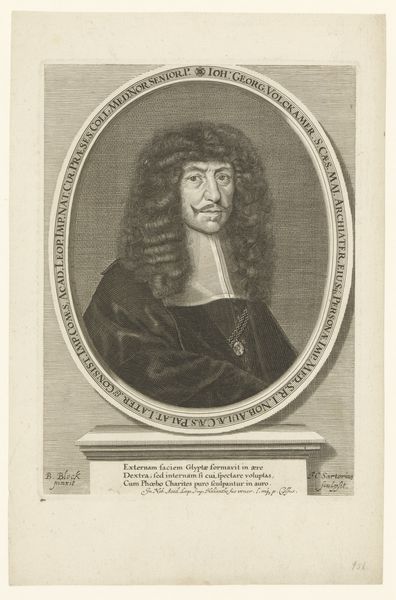
drawing, print, engraving
#
portrait
#
drawing
#
baroque
# print
#
old engraving style
#
portrait reference
#
engraving
Dimensions: sheet: 15 3/16 x 11 1/8 in. (38.6 x 28.2 cm) image: 11 13/16 x 9 3/16 in. (30 x 23.3 cm)
Copyright: Public Domain
Curator: Up next, we have a portrait of Pierre Maugis, seigneur des Granges. This engraving, likely created between 1605 and 1650, is attributed to Jean Morin, and it's currently part of the Metropolitan Museum of Art's collection. Editor: My initial impression is somber. The limited tonal range—the stark contrasts between light and dark—creates a dramatic effect. It feels very contained, formal even, by the very geometrical and elaborate frame around the subject. Curator: The frame itself is significant, containing text that identifies Maugis and his role as "Maistre d'Hotel du Roy"–Master of the Royal Household. The visual emphasis reinforces his status. Editor: That's fascinating because the choice of engraving, a readily reproducible medium, contrasts with the aristocratic subject. How does that tension function socially? Was it intended for wide circulation? And think of the labor! Every line, every detail meticulously etched... Curator: Indeed, engravings allowed portraits, typically accessible only to the wealthy, to circulate among a broader audience, even if it remained an elite one. Consider, too, the persistent appeal of portraying powerful men and the ideals associated with masculinity across centuries. Editor: The texture! You can almost feel the etched lines, even virtually. And the way the light plays across Maugis's face and the folds of his garments gives real depth using a flat medium. This makes me appreciate the artisanal skills involved at this scale in the making process. It invites an inquiry into the circulation and use of such portraits. Curator: The portrait encapsulates a moment in time. Maugis’ features, hairstyle, and attire contribute to his character. Beyond just recording appearance, the images, lines and even medium signal codes of the court life. The artist had captured not just a person but the aspirations and beliefs attached to identity in his time. Editor: So, from material to symbol! That layering of historical markers tells a powerful story. Thanks to this image, Maugis, his title and position is not completely forgotten in history, as if engraving itself created a collective and popular memory of status through reproduced portraiture. Curator: Exactly! Seeing his status memorialized with text also hints to what they deemed important. It has certainly enriched my understanding of the layers beneath its surface.
Comments
No comments
Be the first to comment and join the conversation on the ultimate creative platform.
